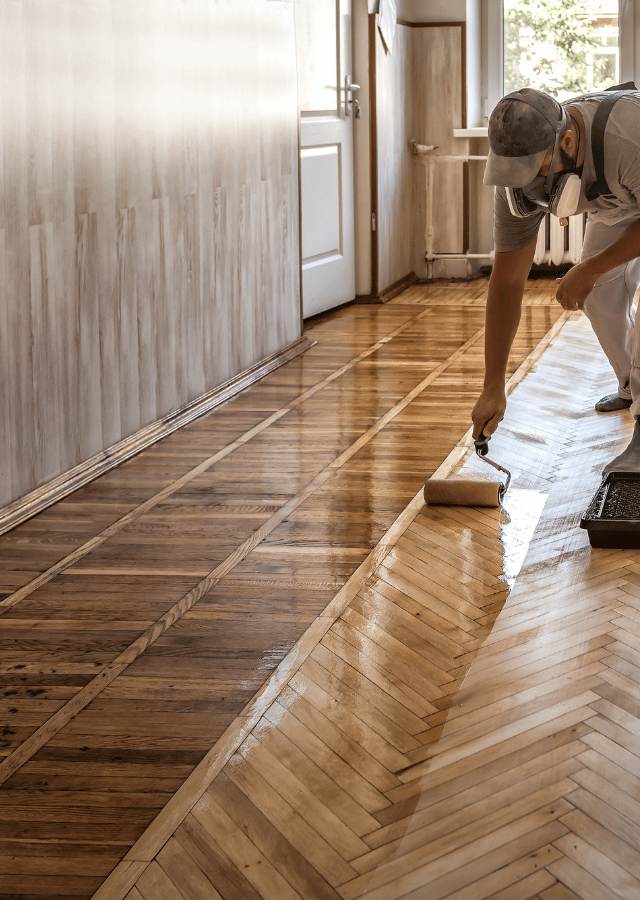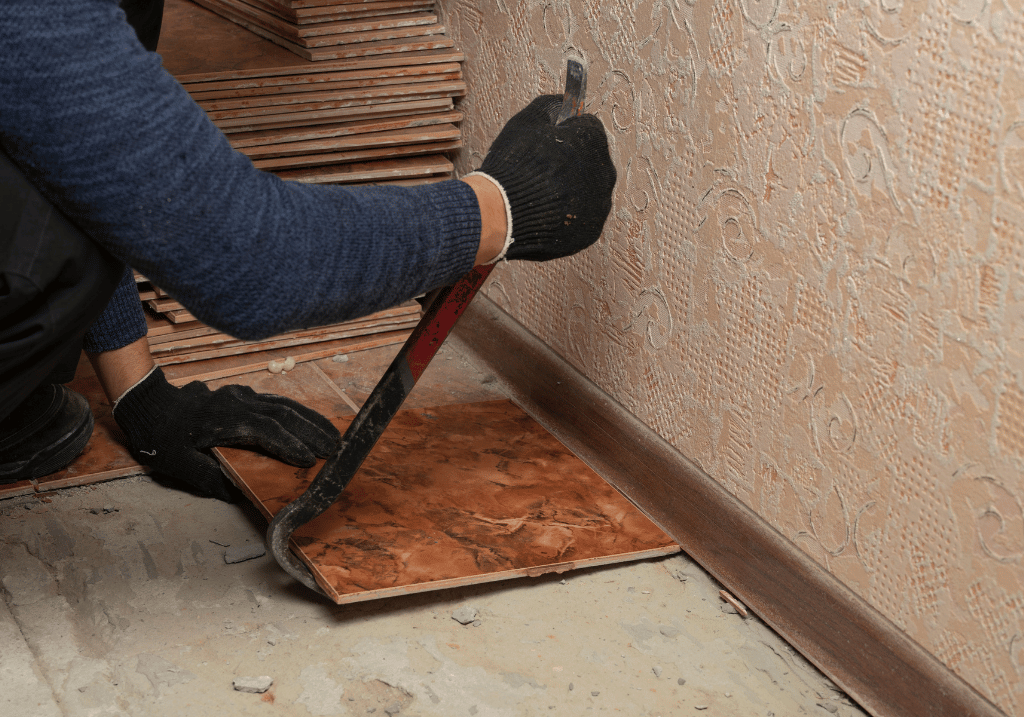Upgrading your home’s flooring can dramatically change the look and feel of your space.
Many homeowners are turning to vinyl flooring as a cost-effective, stylish, and durable option.
A common question arises: Can vinyl flooring be laid over ceramic tile?
The short answer is yes, and it’s a fantastic way to update your home without the need for a complete overhaul.
Although we would never recommend vinyl flooring over ceramic or porcelain tiles, we understand people want to do this.

Why People Choose Vinyl Over Ceramic Tiles?
Before diving into the “how,” let’s briefly discuss the “why.”
Vinyl flooring offers several advantages:
- Cost-Efficiency: Laying vinyl over existing tile cuts down on labor and material costs.
- Style Variety: Modern vinyl comes in numerous designs, mimicking everything from hardwood to stone.
- Ease of Installation: Vinyl’s versatility allows for a smoother installation process over existing floors.
Preparing the Foundation: The Initial Steps
- Assess the Ceramic Tile Condition:
- Ensure tiles are well-adhered, without cracks or significant damage.
- Remove or repair any damaged tiles to prevent future issues.
- Level the Surface:
- Grout lines and tile irregularities need leveling to avoid telegraphing through the vinyl.
- Apply a self-leveling compound if necessary, ensuring a smooth, flat surface.
- Height and Clearance Considerations:
- Measure the combined height of the ceramic and vinyl flooring. Verify that doors, appliances, and furniture can accommodate this new height.
Installation Process: Laying Down Your New Floor
- Choosing Your Vinyl Flooring:
- Select from luxury vinyl planks (LVP), vinyl sheets, or tiles based on your style preference and the room’s needs.
- Consider waterproof options for areas like kitchens and bathrooms.
- Prepping the Ceramic Tile:
- Clean the tile thoroughly, removing debris and ensuring the floor is dry.
- Fill deep grout lines to create a seamless surface for the vinyl to lay on.
- Moisture Barrier and Underlayment:
- In moisture-prone areas, roll out a moisture barrier on the tile before installation.
- An acoustic underlayment may be used to reduce noise, especially important in multi-story homes.
- Installation Techniques:
- For LVP and tiles, consider the room’s dimensions and decide on the direction and pattern of laying the flooring.
- Carefully cut and fit the vinyl around obstacles and edges for a polished look.
- Finishing Touches:
- Reinstall baseboards or trim to enhance the room’s aesthetics and hide any gaps.
- Install transition strips in doorways and between different flooring types for a seamless transition.

Maintenance and Care: Ensuring Longevity
- Daily Upkeep:
- Sweep or vacuum regularly to remove dirt and debris.
- Use a damp mop with a mild cleaner for deeper cleaning, avoiding harsh chemicals.
- Protecting Your Floor:
- Use felt pads under furniture legs to prevent scratches.
- Place doormats at entrances to minimize dirt and moisture being tracked in.
- Dealing With Spills and Stains:
- Clean spills promptly to prevent slipping hazards and potential staining.
- For tough stains, use specific cleaners recommended for vinyl flooring, following the manufacturer’s instructions.
Conclusion: A Fresh Start With Vinyl Flooring
Installing vinyl flooring over ceramic tile offers a pragmatic and stylish solution for homeowners looking to revamp their spaces.
By following these detailed steps, you can achieve a beautiful, durable floor that meets your needs and budget. W
hether you’re aiming for a quick update or a significant transformation, vinyl flooring provides the flexibility and aesthetics to bring your vision to life.
Remember, while DIY can be rewarding, don’t hesitate to consult with or hire professionals, especially for complex projects or if you’re unsure about the installation process.
Ceramic City is here to help guide you through selecting the perfect flooring, ensuring your home improvement project is a success.

